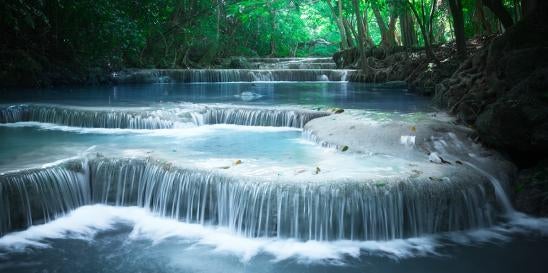On September 15, 2023, the U.S. Environmental Protection Agency (EPA) issued its final rule governing water quality certifications under Section 401 of the Clean Water Act (CWA). Section 401 requires the applicant for a federal license or permit that may result in the discharge into navigable waters to obtain a water quality certification from the State or Tribe, and requires the State or Tribe to act within one year or waive its certification rights. The new rule undoes much of the rule adopted by the Trump-era EPA in 2020 and also adds a number of features intended to clarify elements of the Section 401 process. The new rule imposes specific procedural and substantive requirements for States and Tribes and spells out the role of federal agencies.
Key Takeaways
-
States will have more leeway than was allowed under the 2020 Trump Administration rule to impose necessary conditions on federal permits for projects that involve discharges to federally regulated waters within the jurisdiction of an affected State or Tribe.
-
On the other hand, the new rule includes several features intended to shorten and clarify the certification process, and some changes may benefit those required to obtain Section 401 permits. For example, the new rule includes a pre-certification process where permittees can meet with State or Tribal regulators and obtain feedback about their regulatory concerns, so permittees can address those concerns in a final application. Similarly, the new rule provides guidelines for determining the “reasonable time” necessary for the state to process a certification request and for starting the clock on the statute’s one-year limitation for state action.
-
The new rule also prescribes a limited role for federal permitting agencies, cutting back on the more robust federal role provided for in the 2020 Trump rule.
-
The new rule includes long-promised conforming amendments to EPA’s process for issuing National Pollution Discharge Elimination System (NPDES) permits.
-
The new rule will go into effect sixty days after its publication in the Federal Register. Until the rule becomes final, the 2020 rule will remain in effect, as a result of a lengthy legal battle that arose when the 2020 rule was challenged in federal court, and the Biden Administration then sought to stay these challenges pending the completion of the new rule.
Background
Section 401 of the Clean Water Act authorizes States and Tribes to certify that a discharge into waters of the United States that may result from a federally permitted activity will comply with certain sections of the CWA, including effluent limitations and performance standards, water quality standards, and toxic pretreatment effluent standards. The CWA has statutory timelines for action, requiring States and Tribes to act on a certification request within a “reasonable time” not to exceed one year. Certification requires the State or Tribe to take one of three actions: (1) grant certification; (2) deny certification; or (3) grant certification with conditions. Failure to act timely by the State or Tribe can result in a waiver of certification. The federal government must include the conditions the State or Tribe includes in any certification.
The certification process applies most prominently to wetlands permits under Section 404 of the CWA, issued by the Army Corps of Engineers, and to FERC licenses for pipeline and hydropower facilities. It will also apply to EPA in the handful of states where it has the authority to issue NPDES permits under Section 402 of the CWA.
In 1971, before the major amendments that became the Clean Water Act of 1972 were passed, EPA issued regulations governing the implementation of Section 401. Nearly fifty years later, on April 10, 2019, President Trump issued Executive Order No. 13,868, which directed federal agencies to streamline regulations and reduce regulatory barriers to encourage energy infrastructure development. Based on this direction and the perception that states were at times overstepping their authority under Section 401, the Trump Administration adopted new regulations governing the implementation of Section 401, which went into effect in 2020. The regulations substantially reduced the scope of state authority under Section 401. The regulations were immediately challenged by a number of states and environmental groups and these challenges were eventually consolidated in the U.S. District Court for the Northern District of California.
As the litigation was getting underway, President Biden was elected. Within hours after being inaugurated, the new Administration listed a number of Trump Administration rules it would review and target for revision, including the recently-adopted Section 401 rule. Accordingly, the Department of Justice (DOJ) asked for a voluntary remand of the Trump Administration rule but did not ask for it to be vacated in the interim before EPA adopted a new rule. A number of states and environmental groups objected to the rule remaining in place and instead argued that the rule should be vacated. The United States District Court agreed, and ruled that the 2020 Trump rule should be stricken, resulting in reinstatement of the original 1971 rule. However, the Supreme Court stepped in to stay the District Court’s decision, and the Ninth Circuit overruled that decision, concluding that the District Court overstepped its authority by striking down the Trump rule without first finding that EPA had acted outside its authority.
The upshot of these legal machinations is that the 2020 Trump rule remains in effect until the new rule becomes final. That will occur sixty days after the rule is published in the Federal Register, which should occur soon. Hence, we anticipate the final rule will go into effect around the beginning of December.
Substantively, the new rule contains a number of important features. These include:
-
Confirmation that a State or Tribal Section 401 certification is required whenever a federal permit could result in a “discharge” from a “point source.” The rule thus incorporates legal principles concerning what constitutes a “discharge” and a “point source.”
-
Similarly, the rule requires a State/Tribal certification only if a federally licensed project could cause discharges into the “navigable waters of the United States.” Thus, the rule incorporates the narrowed definition of “waters of the United States” recently adopted by the U.S. Supreme Court in Sackett v. EPA and incorporated into EPA’s new rule defining the “waters of the United States” subject to CWA jurisdiction.
-
The new rule includes a new pre-application process. State and Tribal regulators must meet with project sponsors before filing their final application for certification so that regulatory concerns legal requirements can be identified early in the process and addressed in the final application for certification.
-
The new rule also defines filing of the completed application as the event that starts the clock running on the State or Tribal certification process. Further, the new rule permits the relevant federal agency and the State or Tribal authorities to enter into agreements specifying what constitutes a reasonable time for State or Tribal action on specific categories of federal permits. In the absence of such an agreement, the new rule requires the relevant State or Tribe to set the “reasonable time” for its action within 30 days of receiving a completed application for certification and, if no such notice is provided, imposes a default limit of 60 days.
-
Regarding whether an applicant may withdraw and resubmit a request for certification to restart the clock, EPA declines to weigh in on this controversial issue because “the law in this area is dynamic.” This aspect of Section 401 has resulted in considerable litigation with a variety of outcomes. The rule provides some guidance on when the clock starts for the State/Tribal application process, but EPA intentionally remains silent as to withdrawal and resubmittal, leaving resolution of that question to case-specific decisions about when a State or Tribe has waived its rights under Section 401 by exceeding the statutory allowance of one year for action, particularly where an application has been withdrawn and then refiled.
-
The new rule restores the earlier regulations’ understanding, supported by the Supreme Court’s opinion in Public Utility District No. 1 of Jefferson County, Washington v. State of Washington, 511 U.S. 700 (1994), that a State or Tribe may consider the water quality impacts of the activity subject to the Federal license or permit. The 2020 Trump rule narrowed this authority so that States and Tribes were permitted to regulate only the specific discharge involved, not the potentially broader “activity” at issue. The new rule concludes that this approach was inconsistent with law and, in this respect, represents a significant departure from the 2020 rule.
-
The new rule limits the authority of federal agencies to review State or Tribal decisions under Section 401 to three questions: (1) whether the appropriate certifying authority issued the certification decision; (2) whether the certifying authority confirmed it complied with relevant public notice procedures; and (3) whether the certifying authority acted on the request for certification within the reasonable period of time. The Trump rule provided a much more pervasive power for federal agencies to review and reject State or Tribal decisions under Section 401. Accordingly, except for the three specified questions, review of state agency actions under Section 401 will now primarily be a function of the courts.
Conclusion
EPA’s new rule governing the process of State and Tribal certifications under CWA Section 401 largely restores the State and Tribal regulators’ pre-2020 role. The new rule also includes a number of procedural innovations and substantive clarifications designed to reduce legal uncertainty, and, therefore, reduce litigation risks faced by project proponents where projects may produce discharges to federal waters. Applicants for any such project should be familiar with the requirements imposed on the certification process in the new rules.





 />i
/>i

